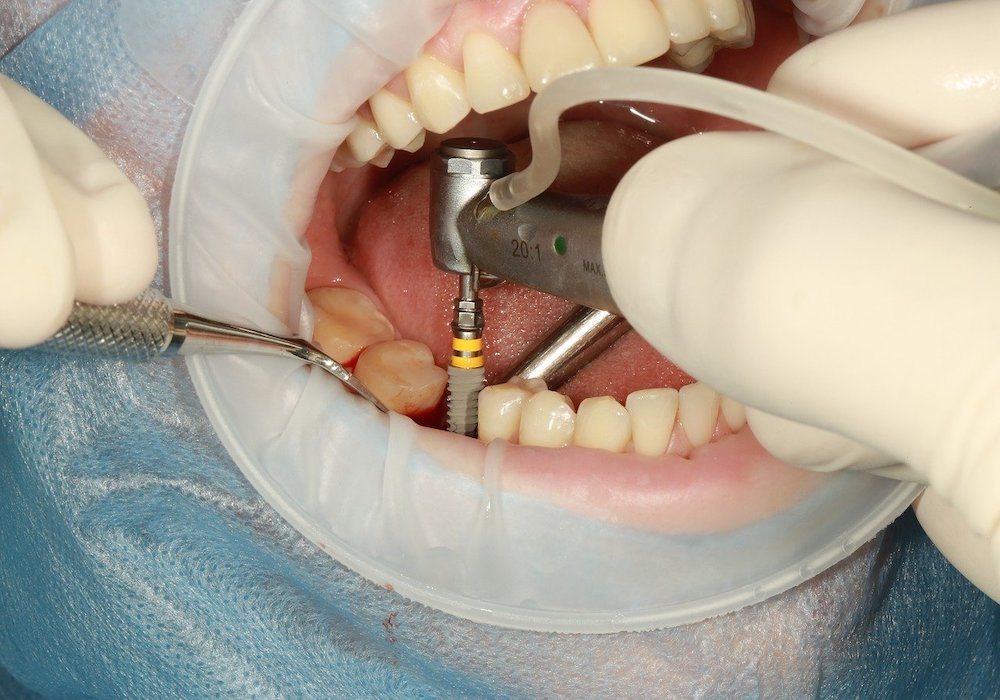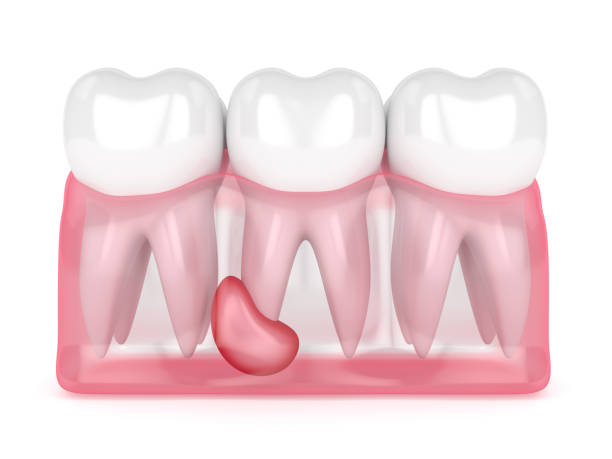Dental Implants
Placing dental implants in the mouth is a small procedure where a small screw-like prosthesis is placed inside your gums which replicates the root of the natural tooth. The procedure of placing implants is painless as it is done under local anaesthesia. Entire procedure takes 30 Mins to 45 mins. Once the implant is placed the final prosthesis will be given in a few weeks. Dental implants are biocompatible to the human body. Placement of dental implants on the site of missing teeth gives us the feel of having Natural teeth inside our mouth. It makes functions of chewing, speaking very much comfortable exactly like our original teeth.
Wisdom Tooth Extraction
Most of the time it’s been observed that, There is always an insufficient space in our mouth for wisdom tooth to erupt completely. Most of the time it comes out in wrong direction or in half way or in improper alignment as compare to rest all teeth present in the oral cavity. Because of inaccessibility for cleaning, recurrent food lodgement around wisdom teeth it tends to get infected soon. So it’s a wise decision to take it out ( extract ) the wisdom tooth when it starts troubling you.
Cyst and Tumour
Dental cyst and tumors are a specific type of lesion that occur in the jaws because of the tooth that are present or impacted in the lower or upper jaw, or a long standing pathology of the jaw, sometimes even unknown. Some of the dental cyst are also classified as tumors based on their severity and classification. These growths are usually noncancerous (benign), but they can be aggressive and invade the surrounding bone and tissue and may displace teeth.
The Surgical options for jaw tumors and cysts vary, depending on the type of growth or lesion you have, the stage of growth, and your symptoms. Mouth, jaw and face (oral and maxillofacial) surgeons can treat your jaw tumor or cyst usually by surgery, however in some cases, by medical therapy or a combination of surgery and medical therapy.
The most common described cyst and tumors include:
- Ameloblastoma. This is a relatively common, slow-growing, usually noncancerous (benign) tumor. It develops most often in the jaw near the molars and can invade local structures such as bone and soft tissue. This tumor can recur after treatment; however, aggressive surgical treatments will typically reduce the chance of recurrence.
- Dentigerous cyst. This cyst originates from tissue that surrounds a tooth before it erupts into the mouth. This is the most common form of cyst that affects the jaws. Most often these cysts will occur around wisdom teeth that are not fully erupted, but they can also involve other teeth.
- Odontogenic keratocyst. Also referred to as keratocystic odontogenic tumor because of its tumor like tendency to recur after surgical treatment, this slow-growing, benign cyst can be destructive to local structures. Most often the cyst develops in the lower jaw near the third molars. These cysts may also be found in people with an inherited condition called nevoid basal cell carcinoma syndrome.
There are even more types of cysts and tumors of the jaws, which in a given situation would require surgical management. Discussed above are the most commonly seen types.
Full Mouth Rehabilitation
Full Mouth Rehabilitation pertains to the restoration and maintenance of oral function, appearance, comfort and dental health of the patient by the restoration of a natural tooth and/or the replacement of missing teeth and contiguous oral and maxillofacial tissues with artificial substitutes. This Treatment is usually advised for the patients with multiple problems like missing teeth, loss of vertical height (loss of tooth structure on the biting surface), decay etc. Proper dental care is given to almost every tooth and is taken care of and a balanced, functionally comfortable and aesthetically dentition is achieved. The patients who need this treatment are mostly 45 years and above.
Zygoma Implants
Zygomatic implants have been documented as a an alternative for the rehabilitation of the atrophic posterior maxilla with both the classical two stage and immediate loading protocols. Zygomatic implants avoid grafting and sinus lift procedures and therefore contribute to a shorter and more comfortable treatment. Further indications for zygomatic implants include failed conventional implant placement, failed sinus augmentation or grafting procedures, rehabilitation after tumor and trauma resections. In the atrophic posterior maxilla, in general one zygomatic implant is placed on each side of the maxilla, in combination with 2-4 conventional implants in the anterior region. For the totally resorbed maxilla, when placement of anterior implants is not possible the concept can be expanded by inserting 2 additional zygomatic implants in a more anterior position (Quad zygoma). Zygomatic implants nowadays are usually immediately loaded with a fixed bridge.
Dr Tofiq Bohra has taken training in the placement of Zygomatic Implants and has a broad scope of experience in rehabilitating Cancer patient who lose their upper jaw on account of resection. He is known for his meticulous planning in the field and consistent results. Dr Tofiq has experience in giving a full set of upper teeth to the patient when all other options have failed in the upper Jaw using conventional implants by using Zygoma Implants. Sometimes because of the sinus proximity in the upper jaw it is not possible to place conventional implants, in such cases Zygomatic Implants are the best solution.




